Let me start off by saying I loooove lemon… in almost everything. And this love for lemon began as a very young kid when I would always order lemon water ice (philly people know what water ice is), get lemonade from the pappi store, or pick up lemon blow heads.
So yea you know a lemon cake was in the works. After making my Moist Delicious Chocolate Cake, it wouldn’t be me if a lemon cake wasn’t the 2nd cake recipe on my blog! Lol! So I’m excited to share this delicious lemon cake recipe with you all because it’s fire!
Childhood memories of Dad’s lemon bundt cake
One thing I remember most about cake is how often pops made them. Baking cakes were like his specialty and he was so amazingly good at it. And as I said in my Delicious Moist Chocolate Cake Recipe…
I would watch him combine all the ingredients and always looked forward to finger-licking the remaining leftover cake batter in the bowl. Pops was cool with that, Mom’s wasnt.

-
Save
Recipe Ingredients:
Dry Ingredients
- Sugar: Sugar is for sweetness. Some people use brown and white sugar, I like to just use white. Use a good brand like Domino’s.
- Cake Flour: Cake flour is for the cake, the base ingredient and gives a more moist result than all purpose flour.
- Baking powder: Baking powder is the leavening ingredient that makes the cake rise. Use new baking powder so the cake rise. Expired baking powder wont be effective.
- Salt: Salt is needed for many things but to also enhance the flavor.
Wet Ingredients
- Vegetable oil: We use vegetable oil to get the cake nice and moist.
- Sour Cream: Sour cream provides moisture, a hint of tanginess so, it adds a balance of flavor, and richness to the cake.
- Buttermilk: Buttermilk affects the texture and moistness and adds a rich flavor to the cake. It also helps to thin out the batter.
- Butter: Use Unsalted Butter to add richness and flavor. Make sure to use a good brand like Land O’ Lakes.
- Eggs: Eggs provide structure and helps the cake rise, but they also provide flavor believe it or not and color. Make sure to use large eggs.
- Vanilla Extract: Vanilla extract is solely for flavor. We only use a little but its one of the most important ingredients in baking in terms of flavor. Use a good quality vanilla like McCormick.
Baking Pan Ingredients
- Pam Cooking Spray: Pam cooking spray is just extra protection to ensure the cake doesn’t stick to the pan.
- Vegetable Oil: We’ll be using just a small amount to keep the cake from sticking
- All-Purpose Flour: We add this after adding the oil and pan to create a lightly dusted pan.
Lemon Frosting Ingredients
- Confectioner’s Sugar: Confectioner’s sugar is the base ingredient and obviously adds sweetness.
- Simple Syrup: Syrup gives it a silky texture, a looser consistency, and adds sweetness.
- Butter: The unsalted butter gives the frosting flavor and helps to solidify it.
- Lemon Juice: The lemon juice is what makes it a lemon frosting.
- Vanilla Extract: Vanilla adds a flavor to every frosting that is necessary for it to taste like a true frosting.
Cookware you’ll need:
Ok so for the cooking utensils you’re going to need.
- First off you’re going to need a Bundt Cake Pan since we’re making pound cake so make sure you have one of those.
- Secondly, make sure you have a very Big Mixing Bowl because this is a big cake and so you’re going to need a big mixing bowl to blend everything in.
- Have a Small Mixing Bowl on hand as well to make the frosting.
- You’re also going to need some tools for mixing the ingredients. I always use a Whisk to whisk the dry ingredients first, and a Hand Mixer to blend the batter.
- Make sure you also have a Spatula on hand so you can ensure everything is being incorporated into the mixture and to scrape all the cake mix from the sides of the bowl into the center.
- Make sure you have Measuring Cups and Spoons so you’re using the exact amounts of each ingredient. Have a whisk on deck to combine the dry ingredients and a Strainer to pour the dry ingredients through to remove lumps from sugar and flour.

-
Save
How to make a moist cake
Ok so first things first, the moistness of the cake is probably the most important quality of a cake and what we all want in a cake but struggle to achieve most.
Now I know you’re wondering why use buttermilk and sour cream… which are mainly for moisture when we’re using oil, let me explain….
The one problem with oil is too much can make for a greasy cake, which is why other ingredients that provide moisture, like sour cream and buttermilk, are used.
- Vegetable Oil: First and foremost, vegetable oil is the most common, most important and number 1 ingredient for moisture as it’s the original way we’ve all learned to give cake moisture, and why it’s so effective, unlike butter, is because even once the cake chills, it doesn’t solidify, which keeps the cake moist.
- Buttermilk: Buttermilk also moistens the cake but also adds a hint of tanginess, which gives the cake more richness and adds depth of flavor. It also loosens the batter and affects the cake’s final texture.
- How to make buttermilk: To create your own buttermilk, combine milk with vinegar or lemon juice. The point is to make the milk acidic. The ratios you will use are one tablespoon of white vinegar or lemon juice per cup of milk. Let it sit for a day, and you’ll have buttermilk.
- Sour Cream: Sour cream adds moisture as well. I learned about the impact of sour cream on cake when searching on Google for ways to make my cakes more moist. It is also tangy and adds depth of flavor to the cake, and balances out the sweetness.
Cake density, flour, and alternatives
So, the type of flour used for cake is extremely important because it’s responsible for the texture, moistness and density of the cake. So each type of flour results in a different type of cake crumb.
With the use of cake flour, it will be lighter in color, taller because it rises more, and be more velvety with a finer, more even crumb. Cakes made with cake flour may also be more compact as well.
- All-purpose flour: You can make this cake with all-purpose flour, and it’ll come out just fine, but it will have a denser, chewier texture with a more coarse-like crumb.
- Cake flour: If you’re going for a moist cake, this is one of many ways to achieve it, cake flour. Cake flour will create a cake with a higher moisture level than cakes made with all-purpose flour.
- Cornstarch: Cornstarch, in combination with all-purpose flour, is what makes cake flour. Cornstarch is the ingredient that separates the two and makes the flour best for cakes because of the moisture it produces.

-
Save
How to make Lemon Bundt Cake
- Add dry ingredients to a large mixing bowl, pouring everything through a strainer, then whisk well.
- Add in all the wet ingredients, except the vanilla and butter, and blend well with a hand mixer on low speed just until everything is incorporated.
- Melt the butter.
- Add the butter, along with the vanilla, to the batter, and blend well with the mixer again.
- Preheat oven to 350°F.
- Rub the bundt pan down well with oil, then spray each part well with Pam spray.
- Add all-purpose flour, and shake around so all parts are coated.
- Next, flip the pan upside down and tap the back to remove any excess flour.
- Pour the cake batter into the pan.
- Lift one end of the pan about 1 inch from the surface and let it go. Do this 3 to 4 times to release excessive air in the batter.
- Place in the oven and bake for 1 hour and 10 minutes.
- FROSTING: Meanwhile, create the frosting by adding the powdered sugar and lemon juice to a small mixing bowl.
- Add in the syrup, butter, and vanilla, then stir well with a fork.
- When the cake is done, remove it from the oven and let it chill for 30 minutes.
- Place a plate or cooling rack with parchment paper under it, turn it upside down, then coat it with the lemon frosting.
- Create a lot of lemon zest with lemon peelings and a grater, then garnish the cake with the lemon zest.
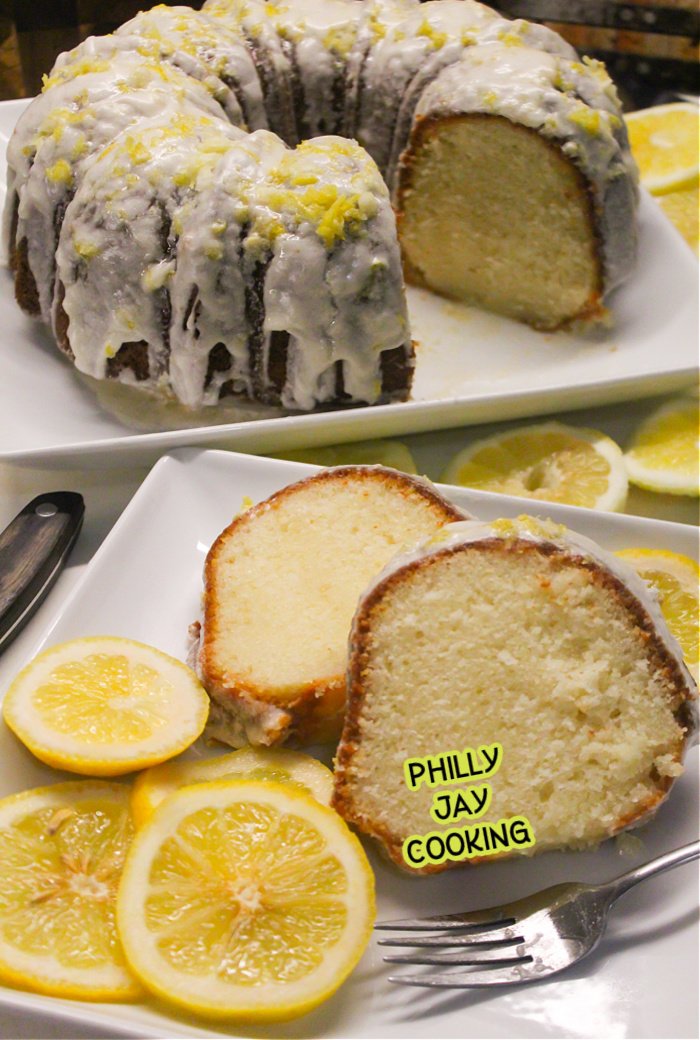
-
Save
Baking tips:
- Use new and good quality ingredients: To optimize the deliciousness of your cake, use new fresh ingredients not old ingredients that maybe close to epiring which will ruin the taste. And use a good brand of ingredients for a higher quality of taste
- Make sure ingredients are room temperature: Make sure everything is at room temperature before combining all the ingredients.
- Measure accurately: To ensure you’re not using too much flour, make sure to use a spoon to scoop the flour into a measuring cup, shake it to even it out, then level it off with a knife so ensure you’re not using too much which can happen when you just dig into a bag of flour with a measuring cup.
- Spatula: Make sure to have a spatula. A spatula is critical for mixing cake batter. Dry four seeps down to the bottom of the the bowl and will remain dry if not stirred in properly with a spatula while mixing.
- Dont overmix the batter: Overmixing the batter can ruin the cake. Below under frequently asked questions, you’ll find a few horrible outcomes that can come as a result of overmixing. Mix on a lower speed just until everything is incorporated.
- Preheat the oven: Make sure the oven is hot before adding the cake. Adding the cake before the oven reaches the right temperature can result in an underbaked cake.
- Let the cake rest after baking: Give the cake time to cool before adding the frosting. This will allow the frosting to stick better and not melt potentially cause the frosting to break.
Storage
- How to store lemon bundt cake? When it comes to storing the cake I keep it under a lid on a cake holder so that it stays nice and moist for days.
- Can you freeze lemon bundt cake? Yes, let’s say you wanted to make a cake ahead of time for some reason, the best place to store it would be wrapped up and stored in the freezer. That will keep the cake fresh for longer.
Lemon Bundt Cake FAQ
Why was my cake wet on top after baking?
This was the last dilemma I needed to fix before mastering this cake. If the top is still wet after an hour of baking, there are a few common things that may be causing this, and a pretty easy fix.
- Too much liquid: If the cake isn’t cooking all way through it’s due to excessive liquid in the batter… so whether you’re following my recipe or creating your own, make sure to be mindful of not using too much liquid.
- Didn’t cook long enough: Another reason for a wet, mushy top is that the cake didn’t cook long enough.. If you experience this, add the cake back to the oven and bake it longer, or increase the cooking time by a few minutes in the future.
Why is my cake sticking to the pan and won’t slide out?
Ok, so this is something that absolutely annoys the heck out of me… something I’m sure everyone who’s made a cake before experienced, cake not coming out of the cake pan easily and sticking to it, ruining the structure.
Basically, making all your hard work become in vain and a waste of time. It’s like getting tripping before getting to the finish line of a track race. Ugh! Here’s why this happens and how to fix and prevent it in the future.
- Undergreased the pan: This is pretty much the main reason this happens. You probably didn’t use enough oil. You dont want the pan soaking in oil, but you want to make sure you use a semi thick coating of oil to where it’s visible but not to where you can scoop any with a spoon.
- What prevents the cake from sticking: I like to use both oil and Pam cooking spray for an extra preventive measure against sticking. I’ve found that when I use both oil and Pam spray in conjunction, I experience far less sticking than when I just use oil or butter.
- How to properly grease the pan: After you add the oil, get a paper towel and spread it all around every part of the pan so every part is grease and you remove any excess oil, then lightly spray all parts with Pam cooking spray. This will prevent the cake from sticking in the future.
- How to remove a cake that’s sticking to the pan? I talk about the solution to this in this article Moist Chocolate Cake Recipe here. <<< Click that link for an easy way to release a stubborn cake that is stuck to a cake pan.
Why do I see a bunch of mushy patches of flour on my cake?
Ok so when you see big light wet uncooked flour on the cake im sure you get very annoyed. First off it’s not only undesireable but sometimes you can taste the raw flour as you’re eating the cake which is a no, no! Unfortunately, there’s no easy fix to this but to avoid these following things in the future.
- Overgreased pan: You overgreased the pan by either adding too much oil or a combination of oil and Pam cooking spray, which left puddles of liquid in the pan. This will create a thick, wet layer of flour after you add the flour, resulting in a bunch of mushy patches of flour on your cake after it’s done.
- How to properly grease the pan: As I mentioned earlier, ensure you remove any excess oil and/or Pam cooking spray. You can do this wiping the oil around the pan with a paper towel and lightly spraying the pan with Pam spray.
- How to properly coat with flour: First off dont add a lot of flour, just a tablespoon or so. Shake the pan around making sure all parts of coated, then turn it upside down and tap the back to remove any excess flour, leaving the pan perfectly lightly coated.
Why did my cake sink after baking?
This is probably all of our biggest nightmares and the most traumatic baking experience you could possibly have and never want to experience. Here are common reasons a cake sinks and preventive measures you can take to avoid it from happening again.
- Overmixing: Overmixing can incorporate too much air into the batter. This excessive air can weaken the cake’s structure, resulting in it collapsing.
- Underbaking: The most common reason for a cake sinking is removing it from the oven too soon not allowing it to bake and rise to its full potential fully. Since it’s not fully baked, and still soft, and the structure hasn’t been developed, it will obviously collapse. So make sure not to remove your cake too early.
- Opening the oven door before it’s done: This happens when we get too excited, want to check on the cake, and open the oven door, which causes a sudden drop in temperature. The incoming cool air stops and disrupts the baking process, causing a sudden stop in it’s rise, leading to a collapse of the cake.
- Outdated leavening ingredients: If the baking powder and or soda, which are the two ingredients most responsible for the cake rising, are outdated, it won’t be effective, and therefore the cake won’t rise to its full potential and just sink when removed from the oven.
- Incorrect ratio of ingredients: If you dont use ENOUGH baking powder for the amount of flour and liquid used for example, it wont rise or it will rise initially then sink because it’s not enough baking powder to support the amount of flour and liquid used. Using too much baking powder can cause this too.
Why does my cake have a gummy texture and streaks?
- Underbaking: This usually happens when the cake it slightly underbaked. If the cake is underbaked, the center will be left wet and dense, resulting in a gummy texture.
- Overmixing: When you overmix the batter, the gluten can become too strong and overdeveloped, resulting in a tough, gummy-like texture.
- How to prevent this? Mix batter until everything is just incorporated and dont mix it on high speed when using a hand mixer. Stick with a low to medium speed for a short mix and or combine everything with a big spoon.
- Too much liquid: I’ve found that using too many liquids to provide moisture can result in a gummy cake, as it prevents the flour from developing a drier, cake-like texture. Excessive amounts of oil, apple sauce, buttermilk, or sour cream can cause this.
How to keep the cake moist?
Keep the cake in room temperature covered under a lid typically on a cake holder. I don’t put my cake in the refrigerator at all. I leave it out that keeps it moist. You can even keep it sitting in the microwave just make sure it’s covered.
Can you add lemon juice to the cake batter?
Yes but I like to make a vanilla cake with lemon frosting because lemon is strong and I found adding it to the cake batter made for a cake that was too, uhmm… lemony.
Can I use another type of cake pan for a layered cake?
Yes, people actually make layered cakes more often, especially here in the States. This is a pretty big cake I’m making, considering I’m using three cups of flour. This cake would definitely work for a two- or three-layered cake.

-
Save
Alright that’s all for now. I hope you guys love this lemon cake! If you do give me 5 stars and leave a comment below letting readers know how much you enjoyed it.
Also, share this recipe with friends and family, it helps in these google streets. Lol! And dont forget to subscribe so you can get a notification everytime I post a new recipe. Love you all, later!
Enjoy, later!
PBJ~
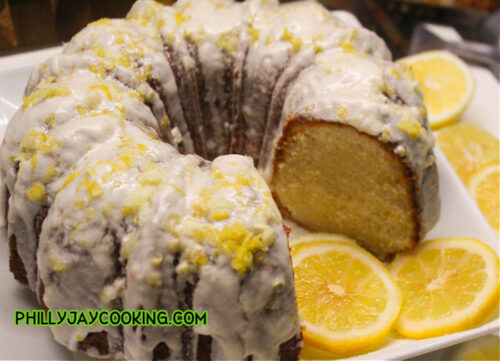
-
Save
Super Moist Lemon Bundt Cake Recipe (Made From Scratch)
- Author: PhillyboyJay
- Prep Time: 30 Mins
- Cook Time: 1hr 10 Mins
- Total Time: 1 Hr 40 Mins
- Yield: 20
- Category: Dessert
- Method: American
Description
Delicious, super moist, lemon bundt cake recipe made from scratch with a rich homemade lemon frosting. Crowd pleaser, perfect for social gatherings, parties, and dessert.
Ingredients
Dry Ingredients
- 3 Cups Cake Flour
- 3–1/2 Cups White Sugar
- 1 Tbs Baking Powder
- 1 Tsp Salt
Wet Ingredients
- 1 Cup Buttermilk
- 1 Cup Sour Cream
- 1 Cup Vegetable Oil
- 1/2 Cup Melted Unsalted Butter
- 4 Large Eggs
- 1 Tbs Vanilla
Cake Pan Ingredients
- 2 Tbs Vegetable Oil
- Pam Baking Spray
- 1/4 Cup All-Purpose Flour
Frosting Ingredients
- 3 Cups Confectioner’s Sugar
- 3 Tbs Simple Syrup
- 2 Tbs Butter
- 2 to 3 Tbs Fresh Lemon Juice
- 2 Tsps Vanilla
Instructions
- Add dry ingredients to a large mixing bowl, pouring everything through a strainer, then whisk well.
- Add in all the wet ingredients, except the vanilla and butter, and blend well with a hand mixer on low speed just until everything is incorporated.
- Melt the butter.
- Add the butter, along with the vanilla, to the batter, and blend well with the mixer again.
- Preheat oven to 350°F.
- Rub the bundt pan down well with oil, then spray each part well with Pam spray.
- Add all-purpose flour, and shake around so all parts are coated.
- Next, flip the pan upside down and tap the back to remove any excess flour.
- Pour the cake batter into the pan.
- Lift one end of the pan about 1 inch from the surface and let it go. Do this 3 to 4 times to release excessive air in the batter.
- Place in the oven and bake for 1 hour and 10 minutes.
- FROSTING: Meanwhile, create the frosting by adding the powdered sugar and lemon juice to a small mixing bowl.
- Add in the syrup, butter, and vanilla, then stir well with a fork.
- When the cake is done, remove it from the oven and let it chill for 30 minutes.
- Place a plate or cooling rack with parchment paper under it, turn it upside down, then coat it with the lemon frosting.
- Create a lot of lemon zest with lemon peelings and a grater, then garnish the cake with the lemon zest.
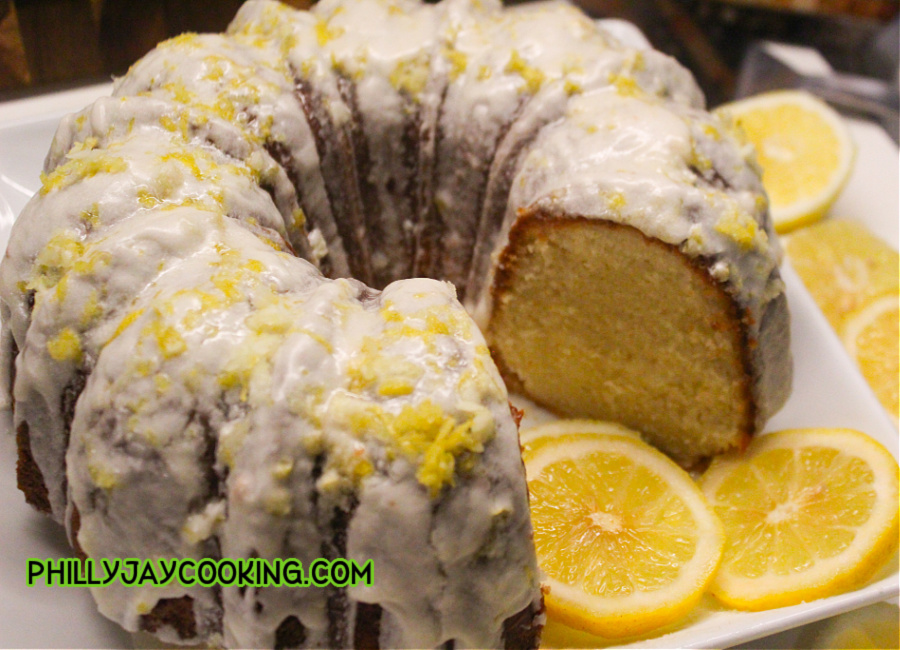
-
Save

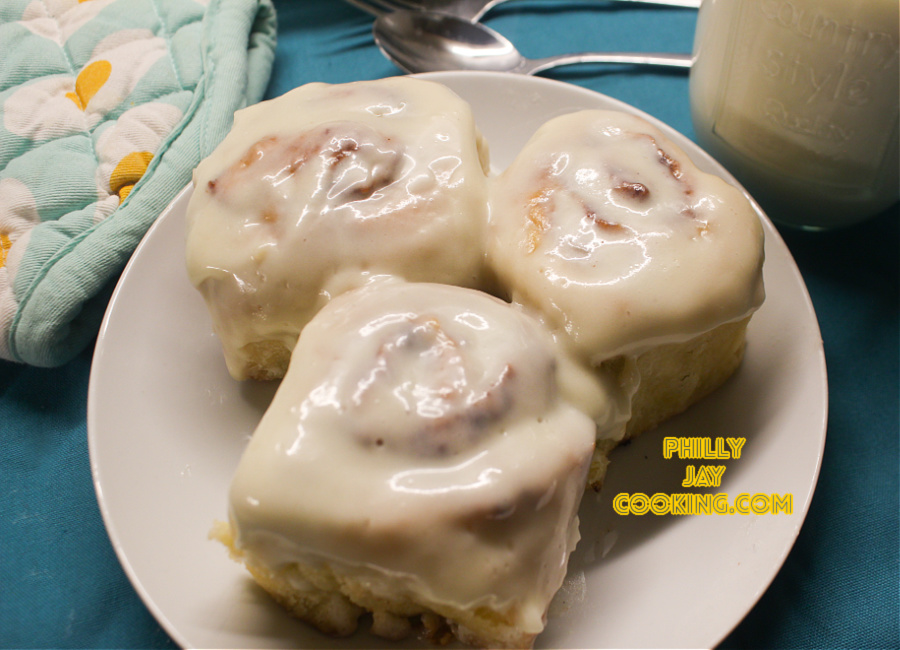
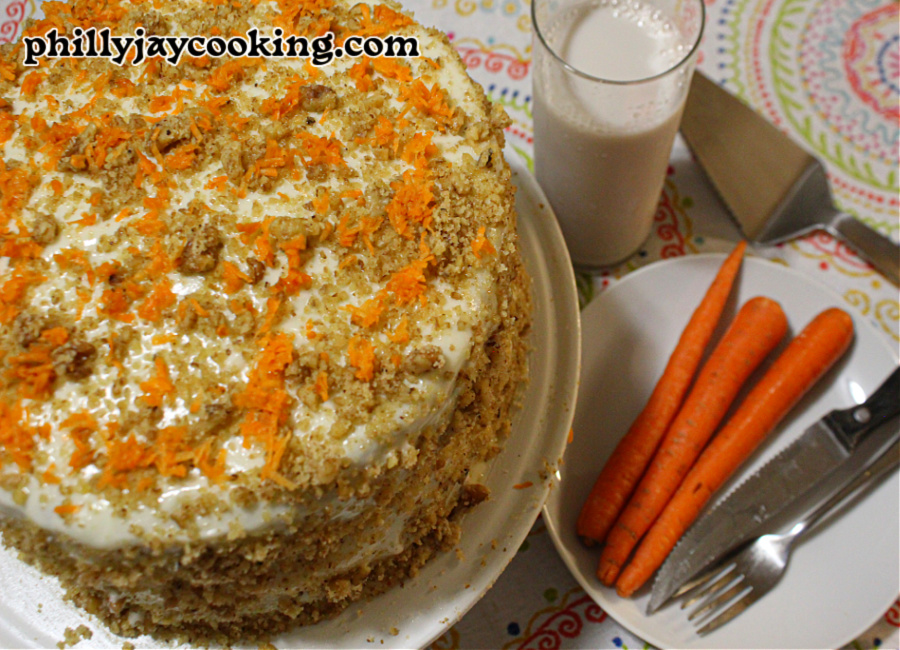

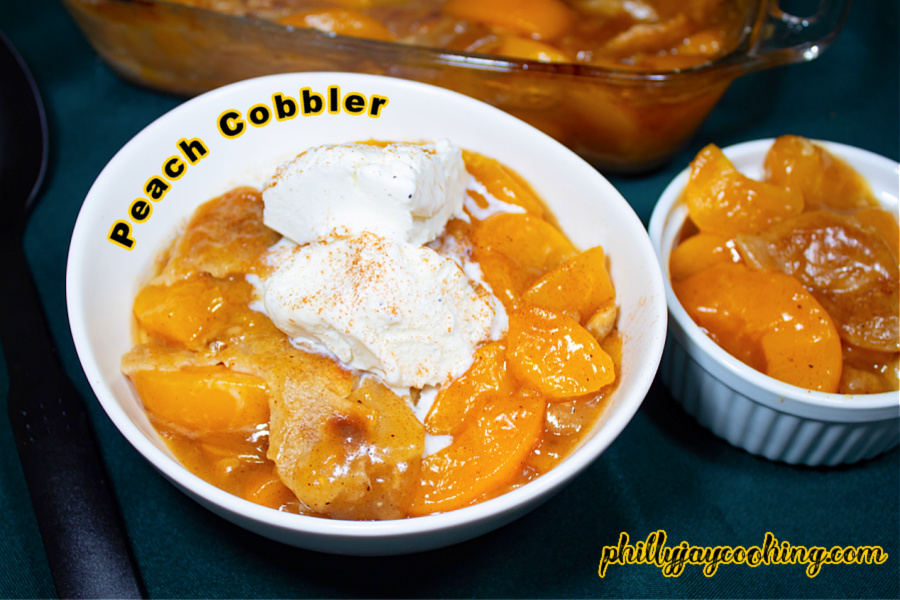


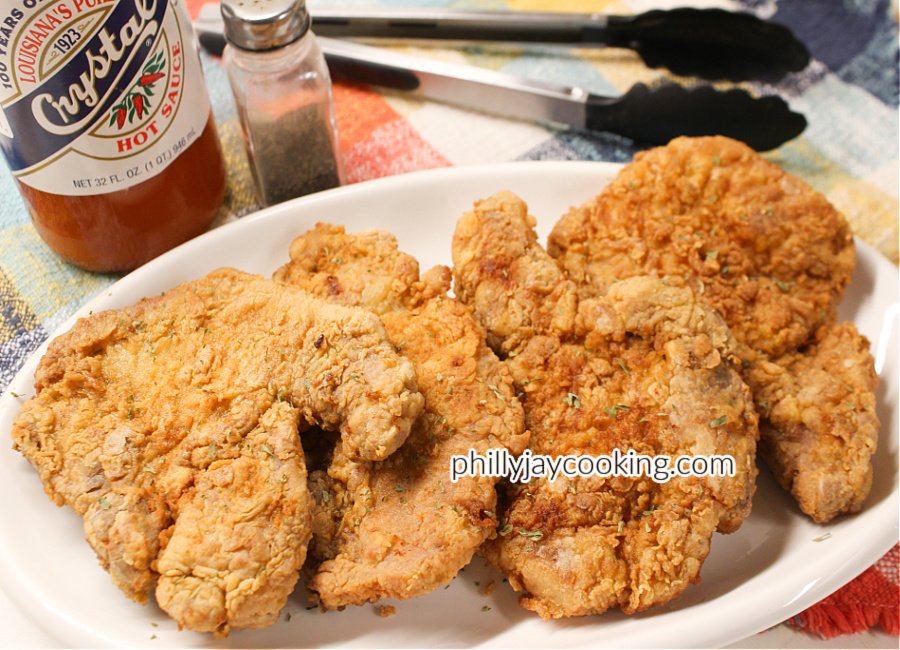

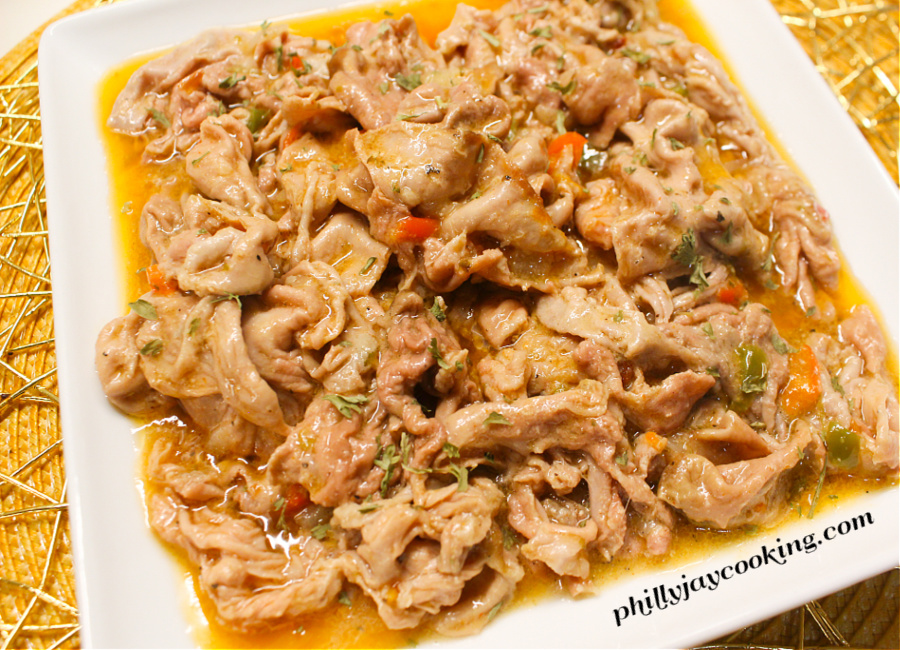

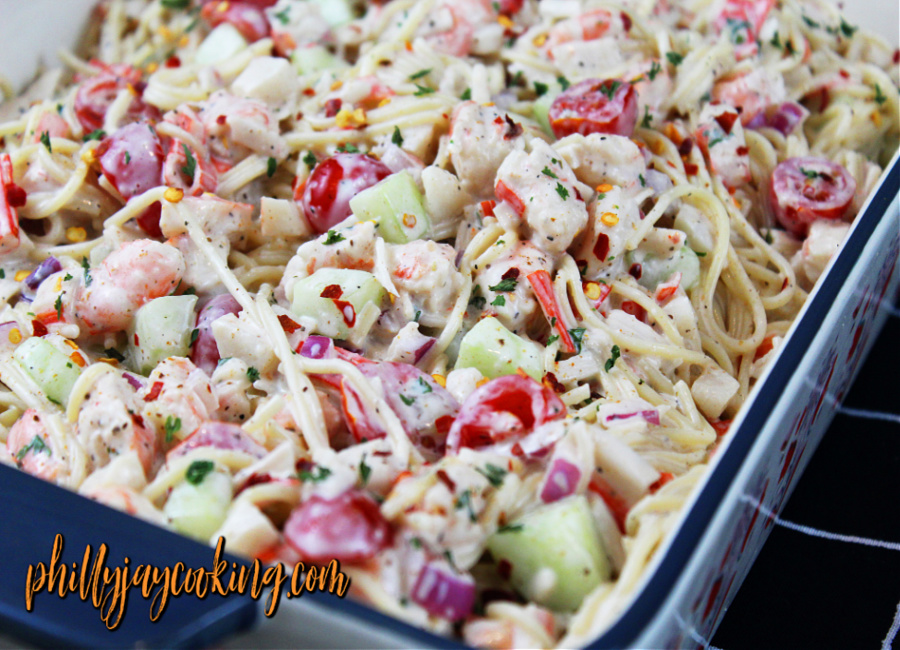
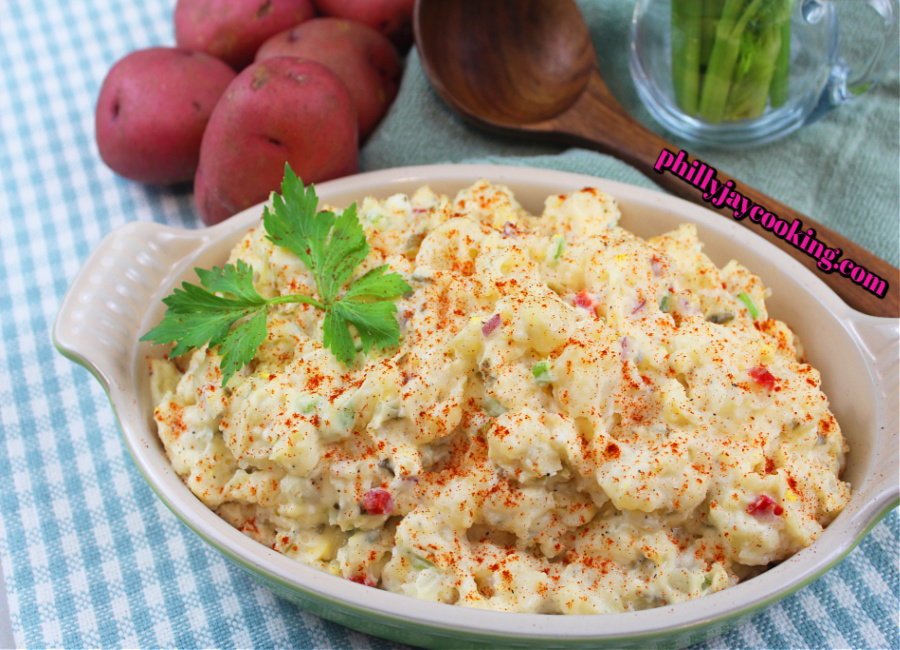

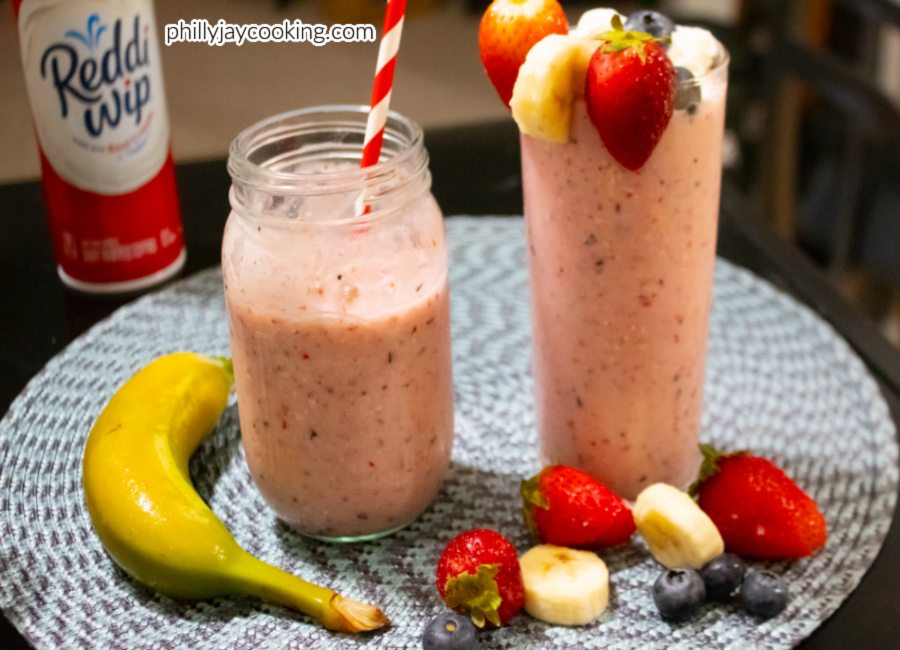


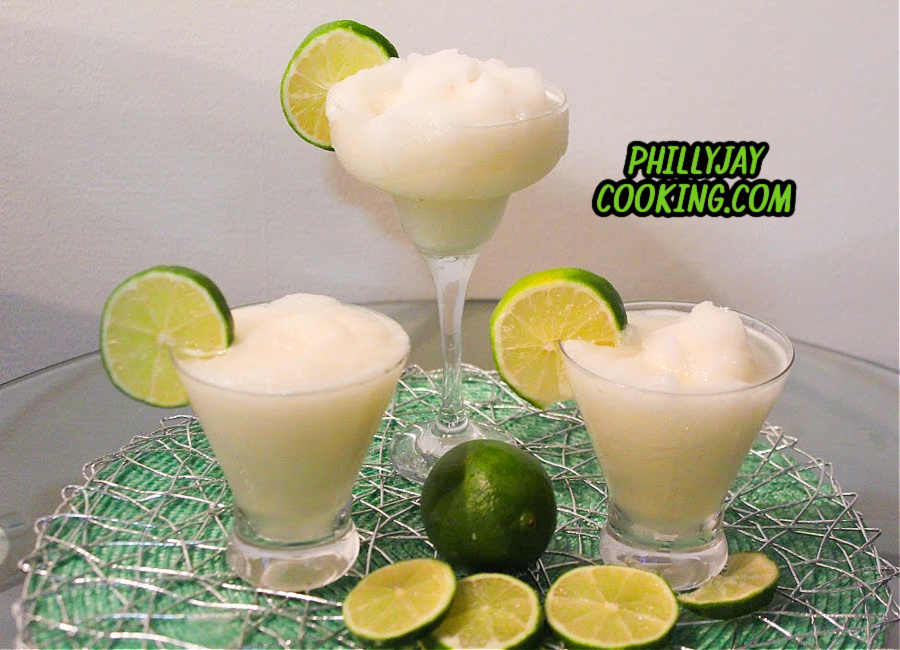


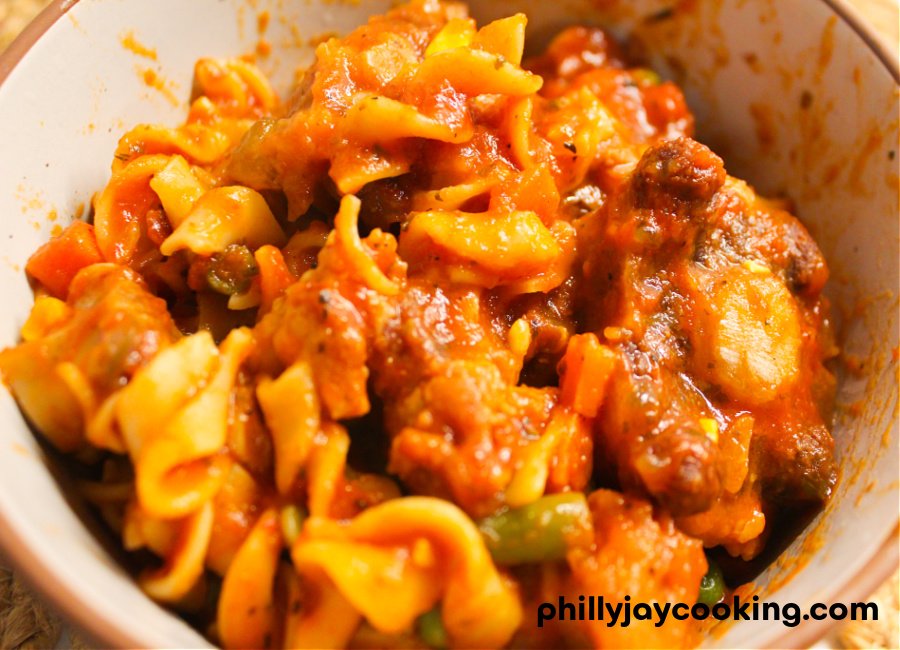
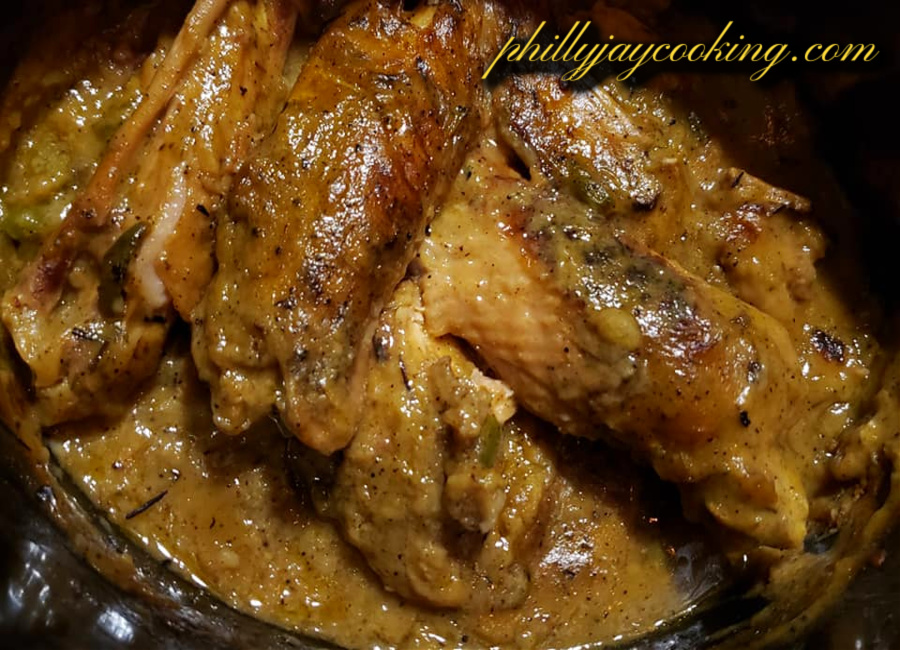
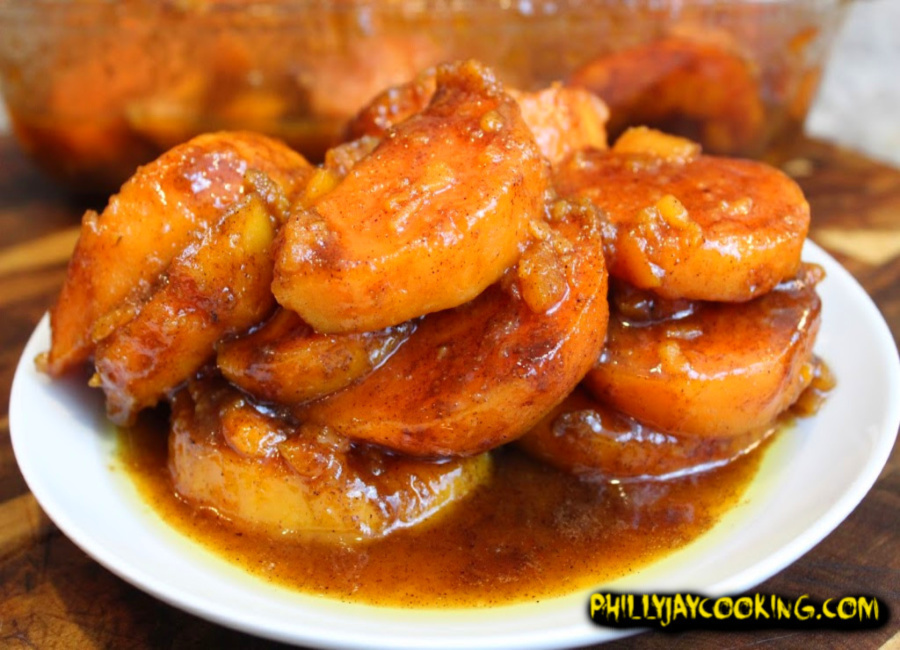

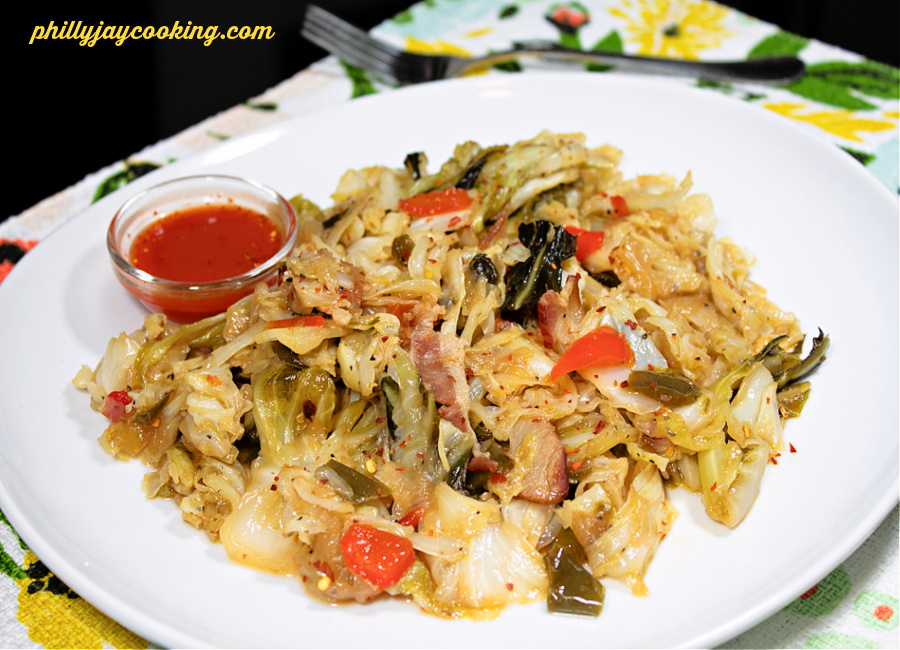
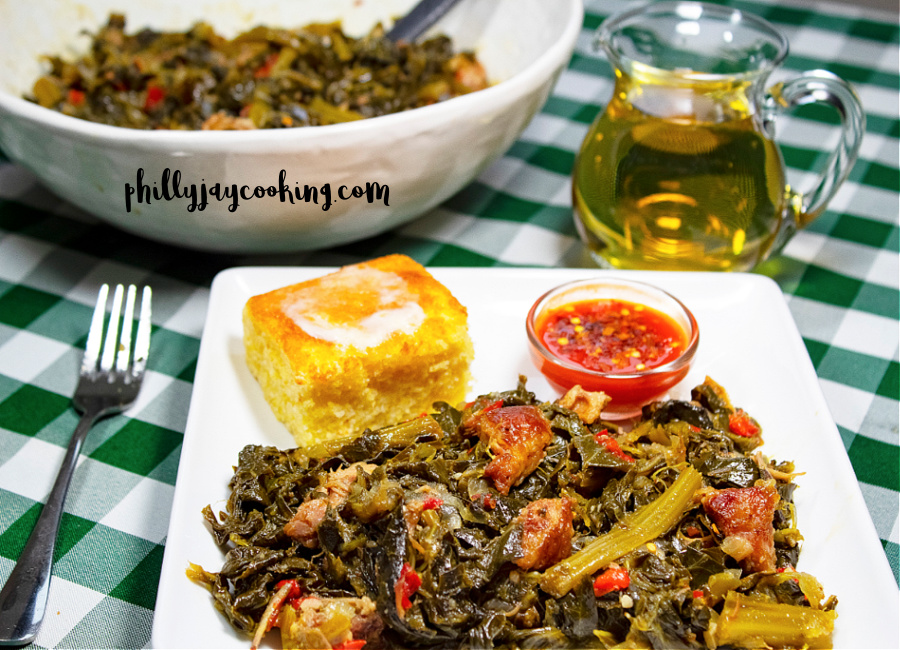

Is there a video of the super moist lemon Bundt cake?
There will be one coming soon.